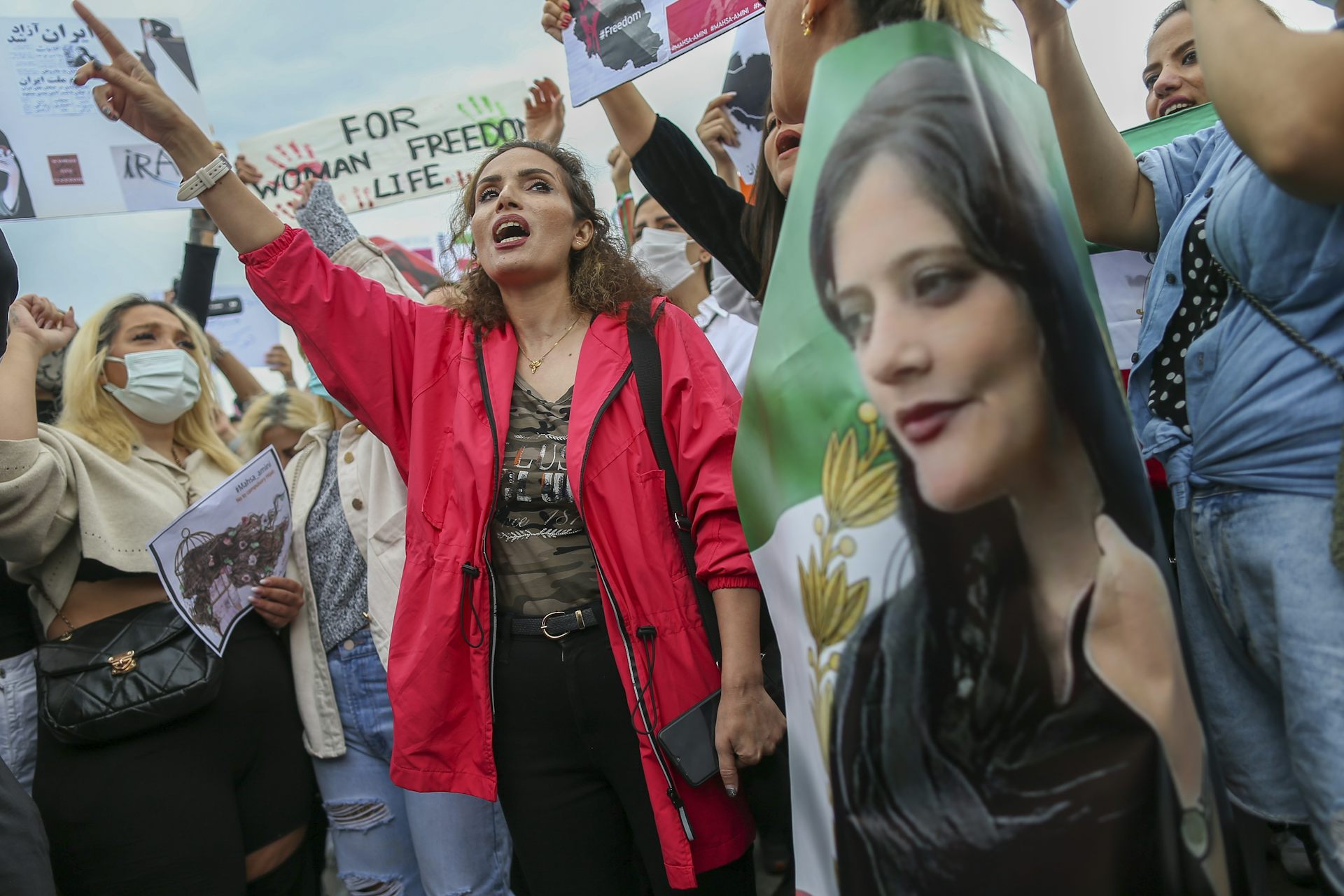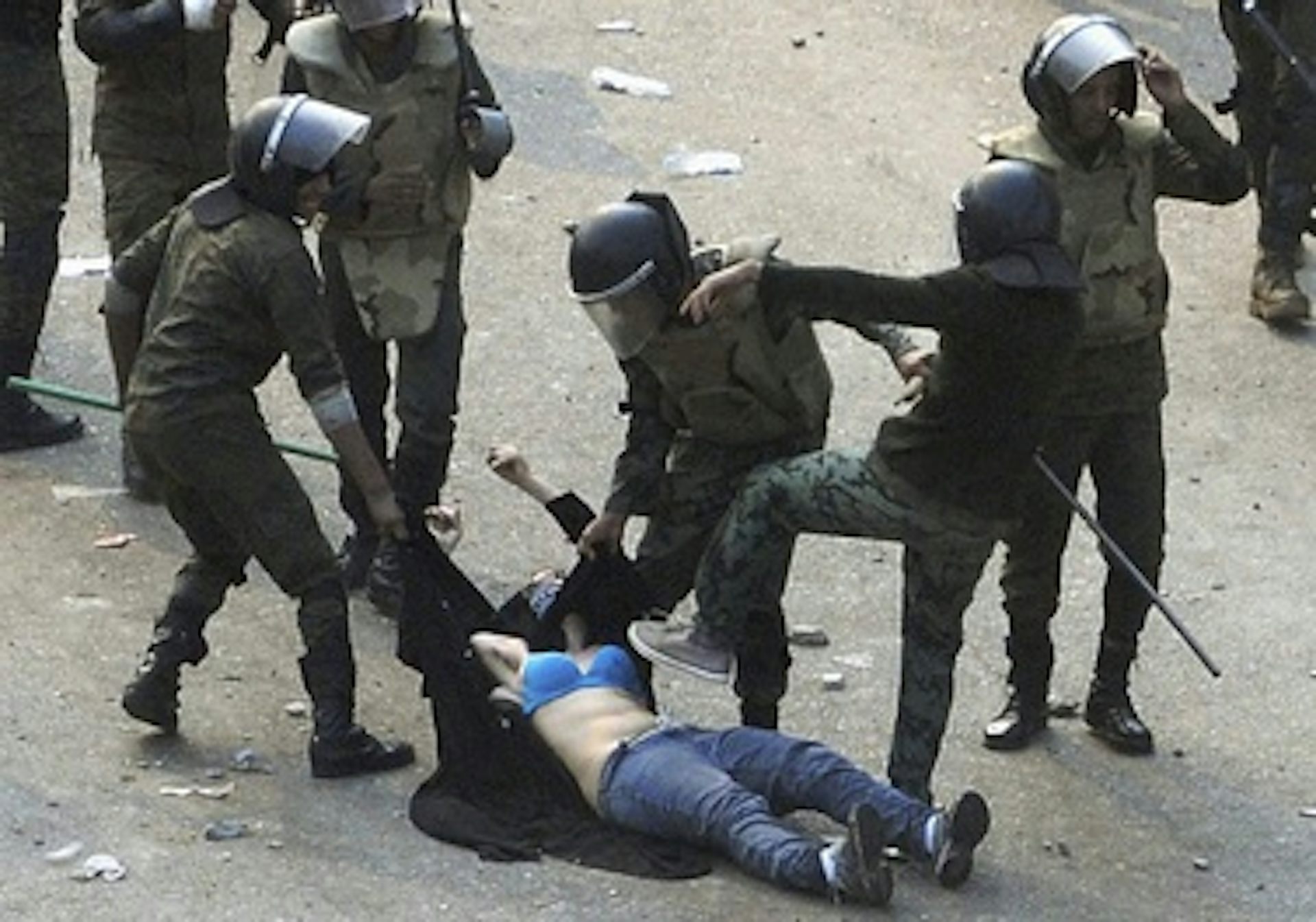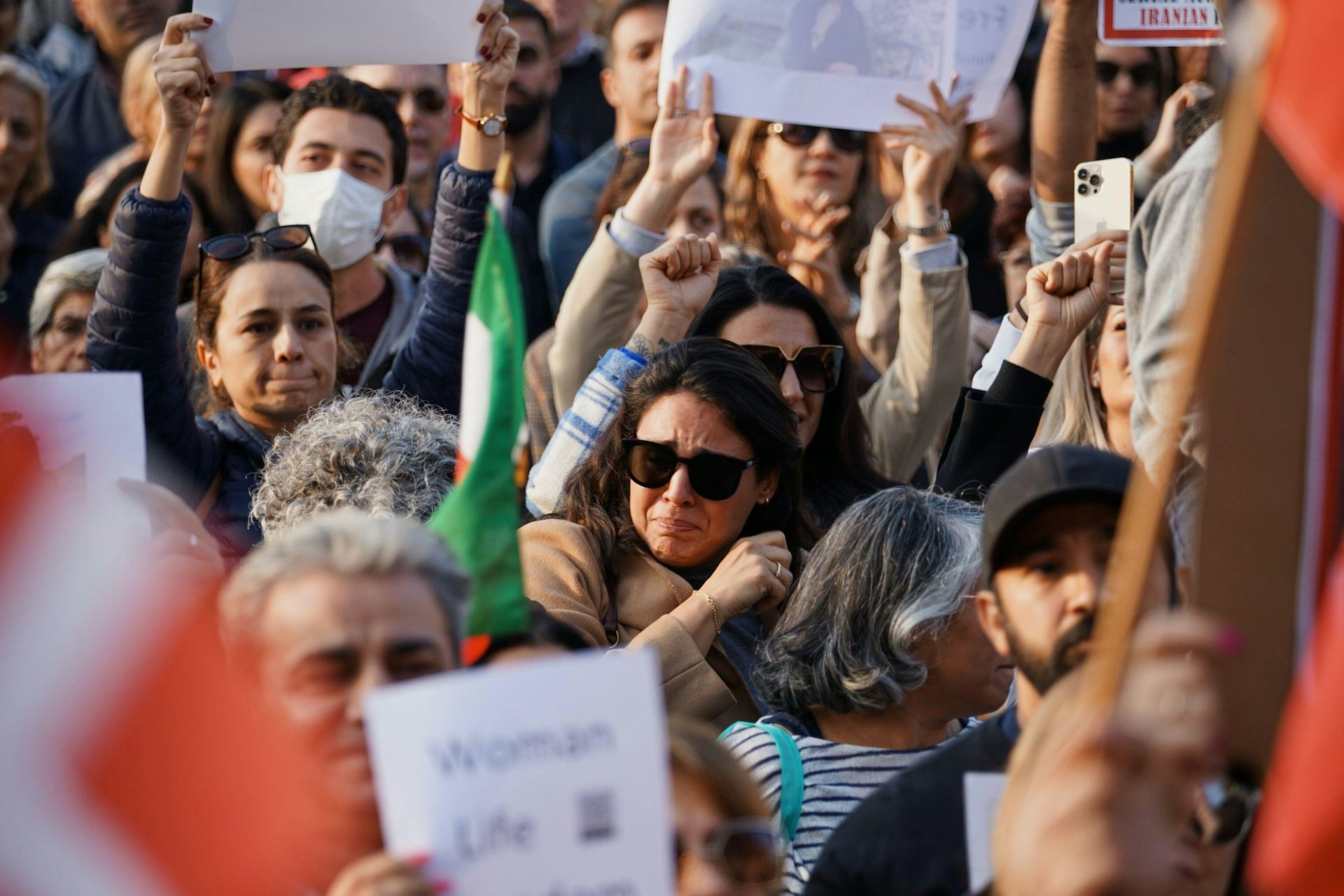The closest things we have to the fundamentalist Christian dream of a fundamentalist theocracy, can be found in the Islamic world in states like Iran, Saudi Arabia and Afghanistan, where Sharia Law is little different to the Levitican Laws a Christian theocracy would impose on the rest of us. In fact, they have the same cultural roots in the tribal cultures of the Middle East, where religious superstition and the support of the priesthood was used to control and subjugate the population and, for the ruling men, the women.
Misogyny and a desire to control the females of the tribe probably originated in pre-human ancestors where biologically, there was an advantage in the males ensuring the children they supported were their own and not those of other males. Males would have been insecure in their ability to ensure fidelity, reinforced by their own tendency to 'spread their seed' as widely as possible, which required the women in the tribe to be unfaithful to their partners. The biological dynamics resulted in males being physically stronger than females and able to impose their control by force, if necessary.
Androcentric religions, such as the Abrahamic religions, evolved partly to codify this gender relationship and give it divine authority, to provide males with the excuses they needed to control and coerce females.
The insecure little men who control the Islamic Republic of Iran are continuing to use religion as their excuse for denying the women of Iran the right to choose what clothes to wear in public!
Imagine if this was reversed and women were telling men what to wear! The regime wouldn't last 5 minutes, and nor would any religion that supported it.
And yet, because their holy book, like the Bible before it, was written in a time when inadequate, insecure little men held the political and economic power, women were regarded as goods to be bought and sold, little different to slaves, the same holy book can be used as an excuse to treat women the same way today.
Just like the Catholic and most fundamentalist Protestant Christian churches, Islam is obsessed with sex. It assumes that if women are not rigidly controlled, they will go and seek out other men to have sex with, and if a women reveals more than just her eyes to any man other than her husband, it will provoke sinful sexual urges in the man which will condemn his 'soul' to an eternity of pain because the religion's god hates nothing more than a man lusting after a women to whom he isn't married.
But of course, that will be the woman's fault for tempting the man. The man can't be expected to see a woman's face, hair or legs and not want to have sex with her, and since it's her doing the tempting, anything that follows will be her fault too, consensual or not.
A couple of recent articles in The Conversation explain the importance of the women's demonstration against the compulsory wearing of the hijab in public and how fundamentalist Islam is merely the excuse for repression. They are reprinted under a Creative Commons license, reformatted for stylistic consistency.
In the first, Hossein Dabbagh, a Philosophy Tutor, University of Oxford, explains the background to the protests and the origins of the draconian dress code in Iran and under extreme forms of Islam in general: The article is reprinted under a Creative Commons license, reformatted for stylistic consistency. The original can be read here:

Iran: protesters call for move to a non-religious state. What changes would that bring?
Hossein Dabbagh, University of Oxford
My friend was in Tehran during protests after the death of Mahsa Amini while in the custody of the morality police (Gasht-e Ershad). My friend went into a grocery shop intending to buy milk. The seller refused to sell anything to her. “Why are you refusing?” she asked. “I can see that you have milk.” “Because you are wearing a hijab,” the seller responded.
This is part of a backlash by those who see themselves as oppressed by the Islamic Republic’s discriminatory hijab law, which prosecutes women for not “covering up”. The term hijab is an Arabic word meaning cover. It’s used to refer to different types of covering, from a long-sleeved coat, pants and scarf to the Islamic government’s preferred form of dress, chador, which is a loose-fitting black cloth worn over the entire body. After Mahsa Amini’s killing in September, mass protests broke out over this law and its enforcement.
Wearing hijab became obligatory for all Iranian women from April 1983, after the 1979 revolution. Since then, all women have been forced by law to wear hijab (a covering of hair and or body) in public, even non-Muslims and foreigners visiting Iran. If they don’t they face prosecution.
The government of Iran, the Islamic Republic, argues that God commands women to wear hijab. This is a government which has leaders who are members of the clergy and merged religious beliefs into state law. But even some Islamic scholars argue that the Qur'an does not suggest that hijab should be compulsory.
Iranian hijab protests.
This has led the nation to the current upheaval, with vast protests across the country, and people being killed.
At many protests the Iranian resistance chant is Zan, Zendegi, Azadi (#WomenLifeFreedom) is heard. The protesters call for life and liberty to be applicable to everyone (religious and non-religious). A big part of the motivation behind these protests is to challenge how the current religious law takes away the right of women to choose what to wear.
What is secularism?
Secularism is the idea that states should be neutral about religion. The state should not back a specific religion over others. A secular state provides equal opportunity for religious and non-religious citizens to pursue their lives. The state must respect everyone’s values (including minorities), not just some people’s values.
On the 40th day after #MahsaAmini’s death while in custody of the Iranian regime, thousands of protesters take to the streets, despite authorities efforts to stop them. This is in her home town Saqiz pic.twitter.com/EgFaHOp135
— Frida Ghitis (@FridaGhitis) October 26, 2022
While some people might be railing against women being forced to wear the hijab, others continue to feel strongly about its continued use. Reports say that Iranian authorities have closed some coffee shops because of the “improper” hijab of some female customers. And more recently, a woman was arrested for eating breakfast in a café with no hijab.
Iranian history of secularism
Modern debates about secularism in Iran can be traced back to the Constitutional Revolution in 1906. It advocated liberalism and secularism and began conversations about a society without religious rules for all.
Iranians experienced enforced secularisation shortly after Reza Shah Pahlavi was crowned in 1925. In 1936 he issued a decree Kashf-e hijab that any public expression of religious faith, including wearing hijab, was illegal. Again, this was a leader was telling women what to wear. However, his attempt to militantly secularise and westernise Iran faced resistance from society.
The overthrow of the Pahlavi dynasty in 1979 led to the establishment of a militant Islamic government based on Shia Muslim teachings. After the hijab became mandatory, it became a symbol of compulsory faith. It has also played a significant role in pushing some parts of the Iranian population towards a more secular state.
In 2022 Iran is experiencing some dramatic shifts, including what appears to be a shift towards secularism. Some argue that secularism is an enemy of religion or a product of western colonisation. Despite the majority of Iranians considering themselves religious, some evidence shows that Iranians are less religious than before.
Since the Islamic revolution there’s been a lot of research about how Iran could work as a secular society and about religious tolerance.
The current protest movement, led mainly by Gen Z in Iran, is growing partly because of its use of the internet and social media to communicate and share information. People can also learn from other nations’ experiences of secularism through social media. This is why the regime is shutting down the internet and censoring YouTube, Instagram and Twitter.
One poll suggests that more than 60% of Iranians now want a non-religious state, the question is whether those in power are willing to give it to them.
Hossein Dabbagh, Philosophy Tutor, University of Oxford

Hijab rules have nothing to do with Islamic tenets and everything to do with repressing women

Thousands of Iranians have taken to the streets to protest the death of Mahsa Amini.
Source: AP Photo/Emrah Gurel
Deina Abdelkader, UMass Lowell
The death of 22-year-old Mahsa Amini after she was held by Iran’s morality police for not complying with the country’s hijab rules has drawn global attention to the repression of women in Iran. Neighboring Saudi Arabia, a Sunni country, theologically and politically opposed to Shiite Iran, has similar restrictive rules when it comes to women.
The connection between faith and practice in the Muslim world at large lies at the heart of my research. A wider look at some of the Muslim majority countries shows that even when they may claim to be diametrically opposed ideologically, they often have similar religious police, or other rules for enforcing faith in everyday life. Moreover, it is my belief, they have nothing to do with Islamic tenets.
In many Muslim majority countries, imposing barriers on women has been a way of informing the world what kind of policy and ideology the government believes in.
Market inspectors turned into morality police
The closest thing to the morality police of today to be found in early Islamic history is the “Muhtasib,” or observers. The Muhtasib, who had to know Islamic law, were appointed by the ruler, such as the sultan in Ottoman times, to oversee matters of trade. The Muhtasib’s job was to make sure that traders were using correct measures and weights, paying taxes and maintaining hygienic conditions in their establishments.
More generally they would observe public actions and had the jurisdiction to reprimand and at times penalize people. They were not known to target women, and they respected the beliefs of multiple faiths that existed at the time. In contemporary Iran, the rules on head covering are upheld for all women, even if they’re not Muslim.
Islam’s basic tenets are that humans share a direct relationship with God without the interference of individuals or any organizations. The Quran does not stipulate that women shouldn’t drive, as in Saudi Arabia, or that women should be forced to wear conservative dress. While the Quran asks both men and women to dress modestly, it does not discriminate.
Politics of the veil
In today’s political environment, women’s bodies and their sartorial modesty are often the quickest way for governments to express whether the country is secular.
In the 1970s, for example, the Syrian government forbade women from wearing the veil in public because President Hafez-al-Assad wanted to convey to the outside world that the Baathist regime was secular and left of the center. The policy continued under President Bashar al-Assad and, in 2010, over a thousand veil-wearing primary school teachers were removed from their teaching jobs and given administrative posts.
In Iran, however, following the 1979 revolution, as observers have pointed out, the hijab came to be the “central symbol,” of Islamist rule. Compulsory hijab wearing was enforced in Iran through law, and any violation was penalized with fines and a two-month prison sentence.
Egypt provides another example. In 2011, the image of a woman whose face was veiled but whose upper garment had come apart exposing her blue bra while she was being dragged by the Egyptian police, captured the media’s attention. The image, which came to be known as the “girl in the blue bra,” soon became a symbol of women’s oppression by the Egyptian military.

The 2011 image known as ‘The Girl in the Blue Bra,’ taken during the Egyptian Revolution.
Source: Stringer/Reuters/Landov
As opposed to a misconception that Muslim women are always forced to act conservatively in their respective countries, the truth is that women are violated for being nonconformist citizens in their respective political regimes.
What is important to note is that these patriarchal practices often are not limited to policing modest dressing for women and penalizing them brutally, but also in forcing them to remove their veil. Following the 2013 coup in Egypt, when Egyptian army chief Gen. Abdel-Fattah el-Sissi overthrew the democratically elected president, Mohammed Morsi, widespread changes were introduced, including a crackdown on women who chose to wear the niqab.
Women’s rights and choices over their bodies need to be respected – by Muslim majority nations and the rest of the world.





No comments :
Post a Comment
Obscene, threatening or obnoxious messages, preaching, abuse and spam will be removed, as will anything by known Internet trolls and stalkers, by known sock-puppet accounts and anything not connected with the post,
A claim made without evidence can be dismissed without evidence. Remember: your opinion is not an established fact unless corroborated.